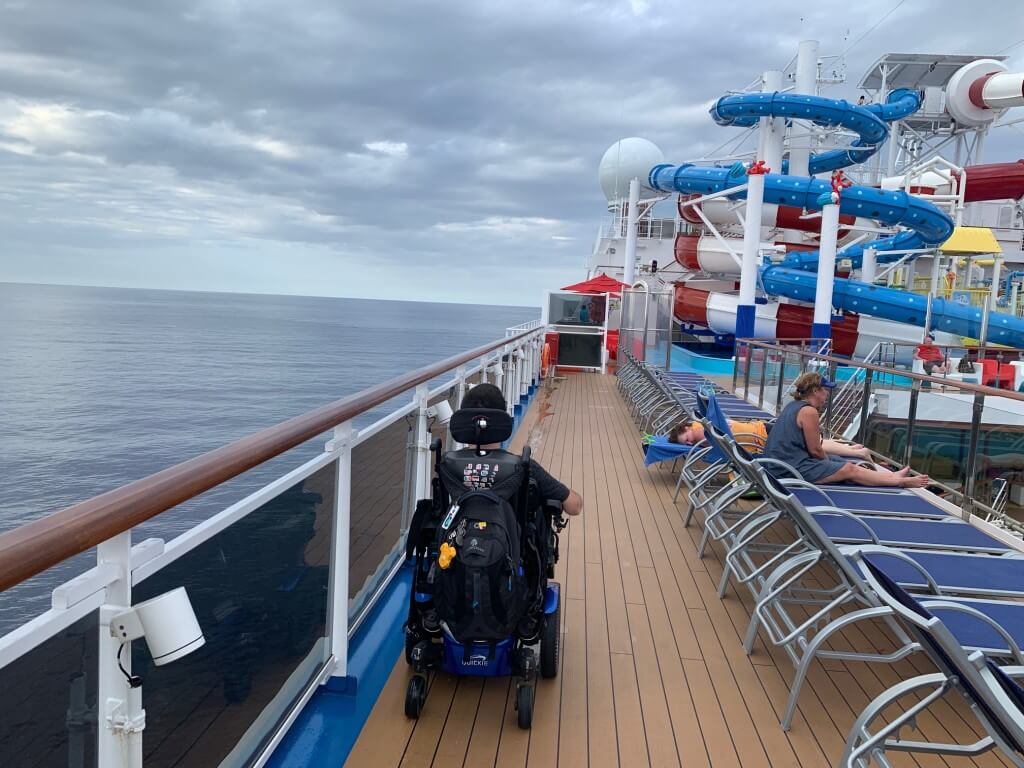Cruise ships are a popular choice for vacationers looking to explore the world while enjoying luxury amenities. However, for passengers with disabilities, the question of accessibility becomes a crucial factor in deciding whether or not to embark on a cruise adventure. This article examines the accessibility features and accommodations offered by cruise ships, shedding light on the efforts made by the industry to ensure that everyone can enjoy a memorable and inclusive experience at sea. Whether you have mobility limitations, visual or hearing impairments, or any other disability, discover how cruise ships are striving to provide equal access for all passengers.
Ship Design and Accessibility
Staterooms with Accessible Features
Cruise ships are designed to provide accommodations for passengers with disabilities, including staterooms with accessible features. These staterooms are designed to be spacious and easy to navigate, with features such as wider doorways and corridors, lower closet rods for easy access, and accessible bathrooms with grab bars and roll-in showers. Additionally, many cruise lines offer accessible staterooms with features such as visual and audible fire alarms, Braille signage, and adjustable bed heights to meet the needs of all passengers.
Accessible Public Areas
In addition to accessible staterooms, cruise ships also provide accessible public areas to ensure that passengers with disabilities can fully enjoy their cruise experience. These areas are designed with wide doorways and corridors for easy maneuverability, and wheelchair ramps are provided in areas where stairs may be present. Accessible seating arrangements are also available in onboard theaters, lounges, and dining areas to accommodate passengers with mobility or seating limitations.
Elevators and Ramps
Cruise ships are equipped with elevators and ramps to ensure easy access to different decks and areas of the ship. Elevators are spacious enough to accommodate wheelchairs and scooters, and ramps are provided in areas where there may be a change in elevation, such as embarkation and disembarkation points or access to tender boats. These accessibility features enable passengers with disabilities to easily navigate the ship and enjoy all the amenities it has to offer.
Wide Doorways and Corridors
To ensure easy access and maneuverability for passengers with disabilities, cruise ships are designed with wide doorways and corridors. This allows for comfortable passage through various areas of the ship, such as staterooms, public areas, and dining venues. The wide doorways and corridors not only accommodate passengers using wheelchairs, scooters, or other mobility aids, but also provide ample space for individuals with visual or cognitive impairments, as well as those with temporary mobility limitations.
Accessible Bathrooms
Cruise ships are equipped with accessible bathrooms to meet the needs of passengers with disabilities. These bathrooms feature grab bars for stability, roll-in showers for easy wheelchair access, and lower sinks for convenient use. Additionally, cruise lines may provide other accommodations upon request, such as shower chairs or raised toilet seats, to ensure that all passengers can comfortably use the facilities. Accessible bathrooms are strategically located throughout the ship, making them easily accessible to all passengers in need.
Cruise Line Policies and Training
Accessible Booking Process
Cruise lines have implemented accessible booking processes to ensure that passengers with disabilities have a smooth and hassle-free experience when making their reservations. These processes often include designated customer service representatives trained in assisting passengers with disabilities, who can provide guidance on accessible stateroom options, availability of mobility aids, and other necessary accommodations. Cruise lines also ensure that their websites and reservation systems are accessible to individuals with visual impairments or other disabilities.
Disability Accommodations
To ensure that passengers with disabilities receive the necessary accommodations during their cruise, cruise lines have established policies and procedures that cater to these needs. These policies may include specific guidelines regarding the provision of mobility aids, dietary restrictions, personal care assistance, and other necessary accommodations. Cruise lines strive to meet these requirements to the best of their ability, providing a comfortable and enjoyable experience for passengers with disabilities.
Special Needs Coordinator
Many cruise lines have designated special needs coordinators or departments to assist passengers with disabilities and ensure their needs are met. These coordinators work closely with the passengers to understand their specific requirements and preferences, making necessary arrangements for accessible transportation, equipment rentals, and other accommodations. Special needs coordinators serve as the primary point of contact for passengers with disabilities throughout their cruise journey, offering personalized assistance and support.
Crew Training and Awareness
To ensure that all crew members are well-equipped to assist passengers with disabilities, cruise lines provide comprehensive training programs and promote awareness about disability-related issues. Crew members undergo training sessions that cover topics such as disability etiquette, communication strategies, and emergency procedures specific to passengers with disabilities. This training enables the crew to provide appropriate assistance and support, creating a welcoming and inclusive environment for all passengers onboard.
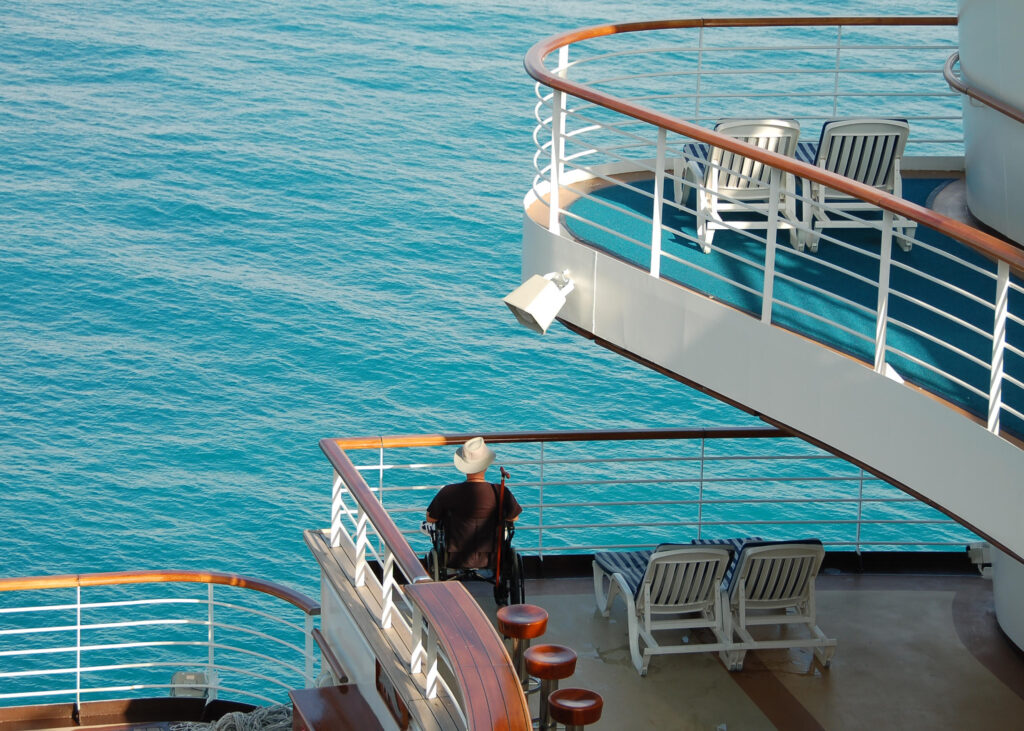
This image is property of s3.amazonaws.com.
Assistance and Support Services
Wheelchair and Scooter Rental
For passengers who require mobility aids, cruise lines often offer wheelchair and scooter rental services. These services allow passengers to conveniently rent the necessary equipment for the duration of their cruise, ensuring that they can comfortably navigate the ship and participate in various activities. Cruise lines collaborate with reputable rental companies to provide high-quality, well-maintained mobility aids to meet the specific needs of passengers with disabilities.
Priority Boarding and Disembarking
To facilitate a smooth embarkation and disembarkation process for passengers with disabilities, cruise lines typically offer priority boarding and disembarking services. These services enable passengers with disabilities to avoid long queues and efficiently board or leave the ship. Utilizing designated accessible embarkation points and providing dedicated assistance, cruise lines ensure that passengers with disabilities can transition seamlessly between the ship and port destinations.
Service Animals
Cruise lines often have policies in place to accommodate service animals for passengers with disabilities. These policies comply with applicable laws, such as the Americans with Disabilities Act (ADA) in the United States. Cruise lines may require relevant documentation, such as proof of the service animal’s training and vaccination records, to ensure the safety and well-being of all passengers onboard. Service animals are typically allowed in passenger staterooms and public areas, but restrictions may apply in certain designated areas for health or safety reasons.
Assistive Listening Systems
To enhance the cruise experience for passengers with hearing impairments, cruise lines provide assistive listening systems in onboard theaters and venues. These systems utilize personal receivers or neck loop induction systems that transmit clear sound directly to compatible hearing aids or headphones. By eliminating ambient noise and enhancing audio quality, these systems ensure that passengers with hearing impairments can fully enjoy performances, presentations, and other onboard entertainment activities.
Sign Language Interpreters
Cruise lines recognize the importance of effective communication for passengers with hearing impairments and often provide sign language interpreters upon request. Passengers can request the services of a sign language interpreter in advance to ensure that they can fully participate in onboard activities and understand important announcements. Sign language interpreters facilitate effective communication between passengers with hearing impairments and crew members, creating a more inclusive and accessible environment for all.
Medical Facilities and Equipment
Onboard Medical Staff
Cruise ships have onboard medical staff, including doctors and nurses, to provide medical care and support to passengers in need. These medical professionals are trained to handle a wide range of medical issues and emergencies, ensuring that passengers with disabilities receive appropriate medical attention. The medical staff is available 24/7 and equipped to handle both minor medical concerns and critical situations, providing reassurance and peace of mind for passengers with disabilities.
Accessible Medical Facilities
Cruise ships have accessible medical facilities that are designed to accommodate passengers with disabilities. These facilities are equipped with accessible exam tables, lowered sinks, grab bars, and emergency call buttons to ensure that passengers with mobility limitations can access the necessary medical care comfortably. In emergency situations, crew members are trained to provide assistance and facilitate the transportation of passengers with disabilities to the medical facilities.
Dialysis Services
Some cruise lines offer onboard dialysis services for passengers with chronic kidney disease who require regular treatments. These services are provided by trained medical professionals and include state-of-the-art dialysis equipment. Passengers can receive their necessary treatments in onboard dialysis centers, eliminating the need to interrupt their cruise itinerary or seek off-ship medical facilities. Cruise lines may require passengers to make prior arrangements for dialysis services to ensure availability and smooth coordination.
Oxygen Equipment
Cruise lines accommodate passengers who require oxygen equipment during their cruise. Passengers can make arrangements for the delivery of oxygen equipment, such as portable oxygen concentrators or cylinders, to their staterooms or designated storage areas on the ship. Cruise lines may have specific guidelines regarding the type and quantity of oxygen equipment allowed onboard, and passengers are advised to consult the cruise line or their travel agent for more information and to make the necessary arrangements.
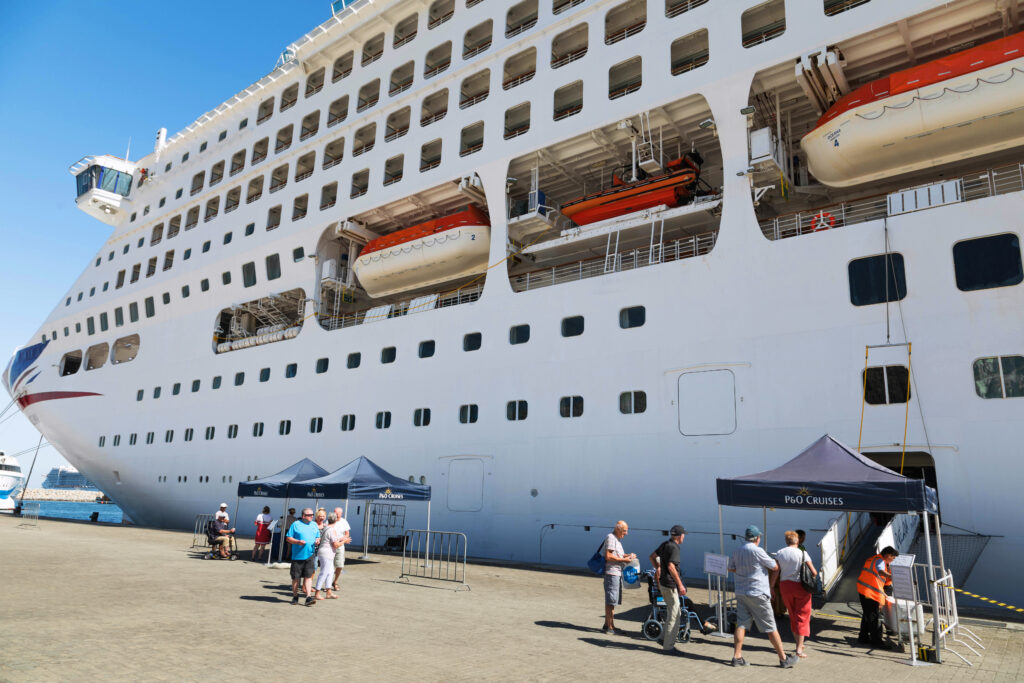
This image is property of www.thetimes.co.uk.
Entertainment and Activities
Accessible Theaters and Venues
Cruise ships provide accessible theaters and venues to ensure that passengers with disabilities can enjoy the various entertainment options available onboard. These venues are designed with accessible seating arrangements, allowing for wheelchair access and providing visibility for individuals with visual impairments. Additionally, cruise lines may offer captioning services, audio description, or sign language interpretation for select performances to enhance the accessibility and enjoyment of the entertainment for all passengers.
Accessible Excursions and Tours
To cater to the diverse needs and interests of passengers with disabilities, cruise lines offer accessible excursions and tours at various port destinations. These excursions are specially designed to accommodate individuals with mobility limitations, sensory impairments, or other disabilities, allowing them to explore and experience the destinations safely and comfortably. Accessible transportation, tour guides trained in disability awareness, and the availability of assistive devices are some of the features that make these excursions accessible and enjoyable for all passengers.
Adaptive Sports and Recreation
Cruise lines provide a range of adaptive sports and recreational activities to cater to passengers with disabilities. These activities may include wheelchair basketball, adapted swimming, accessible fitness classes, or other specially designed programs. Cruise ships are equipped with accessible sports facilities, such as pools with lifts or ramps, and trained sports coordinators who specialize in adapting activities to meet the needs of passengers with disabilities. These adaptive sports and recreation options ensure that everyone can participate and enjoy the onboard activities.
Accessible Pools and Spas
Cruise ships typically have accessible pools and spas that are designed to accommodate passengers with disabilities. These pools may feature pool lifts or ramps to facilitate entry for individuals with mobility limitations, and accessible changing rooms and showers for convenience. Cruise lines also strive to maintain appropriate water temperatures and safety measures to ensure a comfortable and enjoyable swimming experience for passengers with disabilities. Accessible spas may include spa treatment rooms equipped with hoists or adjustable treatment tables to provide accessible relaxation and rejuvenation experiences.
Dining Options and Accessibility
Accessible Restaurants and Buffets
Cruise ships offer accessible dining options in onboard restaurants and buffets to cater to passengers with disabilities. These dining venues are designed with accessible seating arrangements, wider aisles for easy navigation, and lower tables for convenient wheelchair access. Cruise lines strive to ensure that all passengers, regardless of their mobility or accessibility needs, can fully enjoy the dining experience onboard by providing accessible menus, assistance with food selection, and accommodating dietary restrictions or allergies.
Dietary Restrictions and Allergies
Cruise lines understand that passengers may have specific dietary restrictions or allergies, and they strive to accommodate these needs. Passengers can inform the cruise line in advance about any dietary restrictions or allergies they have, ensuring that suitable menu options are available. Cruise lines collaborate with their culinary teams to provide alternatives and make necessary adjustments to cater to specific dietary requirements. Passengers are encouraged to communicate their needs to the cruise line to ensure a seamless dining experience.
Assistance for Visual Impairments
To assist passengers with visual impairments during meals, cruise lines provide various forms of assistance. This may include offering large print or Braille menus, providing verbal descriptions of menu items, or assisting with the selection of meals. Additionally, cruise lines often train their dining staff in providing guidance and support to passengers with visual impairments to ensure that they feel comfortable and confident during their dining experience. These measures promote inclusivity and ensure that all passengers feel welcomed and accommodated.
Seating and Table Height Adjustments
Cruise ships offer seating and table height adjustments to accommodate passengers with disabilities who may require customized seating arrangements. Adjustable seating options, such as chairs with removable armrests or extra cushions, are available to cater to individual needs and preferences. Similarly, tables with adjustable heights ensure that passengers using mobility aids or with specific seating requirements can easily access and enjoy their dining experience on the ship.
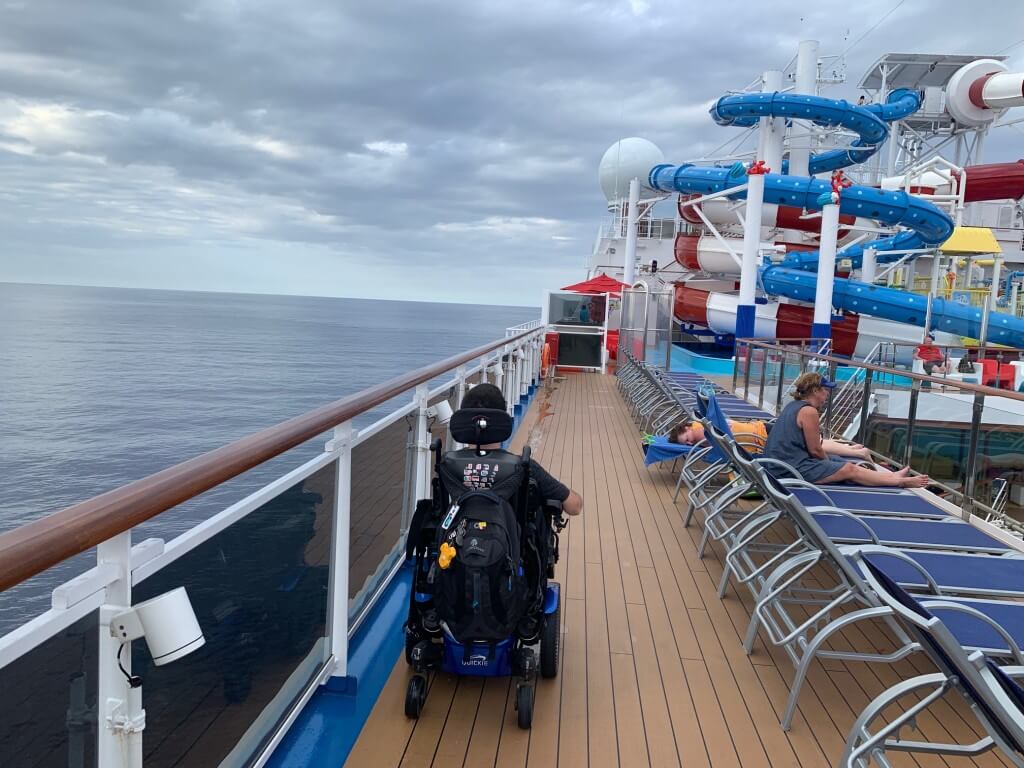
This image is property of curbfreewithcorylee.com.
Communication and Information
Accessible Signage and Braille
Cruise ships use accessible signage and provide Braille signage in various areas to assist passengers with visual impairments. These signs are strategically placed throughout the ship, providing clear directions to different facilities, staterooms, venues, and other important areas. Providing accessible signage ensures that passengers with visual impairments can navigate the ship independently and with confidence, enhancing their overall cruise experience.
Cruise Itinerary and Safety Information
To ensure that all passengers, including those with disabilities, receive important cruise itinerary and safety information, cruise lines provide accessible formats for these materials. These formats may include printed materials in large font or Braille, digital information in accessible formats, or audio recordings. By providing these materials in various accessible formats, cruise lines prioritize the safety and well-being of all passengers and ensure that they have equal access to important information.
In-Room Communication Devices
Cruise ships may provide in-room communication devices for passengers with disabilities to enhance their communication and access to onboard services. These devices may include phones with enlarged buttons or Braille labels, text telephones (TTY), or other assistive devices to facilitate communication between passengers and the ship’s staff. In-room devices enable passengers to easily request assistance, make reservations, or communicate any specific needs they may have, improving their overall cruise experience.
Closed Captioning and Subtitles
For passengers with hearing impairments, cruise ships often provide closed captioning and subtitles for onboard television programming and movies. This ensures that individuals with hearing disabilities can fully enjoy the entertainment options available in the privacy of their staterooms. Closed captioning and subtitles provide access to important audio content, enhancing the entertainment experience and ensuring that passengers with hearing impairments do not miss out on any information or entertainment offered onboard.
Emergency Evacuation Procedures
Emergency Drills and Procedures
Cruise ships conduct regular emergency drills to familiarize passengers, including those with disabilities, with the evacuation procedures in case of an emergency. These drills typically include clear instructions on emergency exits, life jacket usage, and assembly points. Crew members are trained to provide appropriate assistance to passengers with disabilities during these drills, ensuring that everyone understands the procedures and can safely evacuate the ship if necessary.
Evacuation Chairs and Lifts
Cruise ships are equipped with evacuation chairs and lifts to assist passengers with mobility limitations during emergency evacuations. These devices allow for the safe and efficient transportation of individuals with disabilities from higher to lower decks or from one area of the ship to another during emergency situations. Crew members are trained in the proper use of evacuation chairs and lifts, ensuring that passengers with disabilities are prioritized and provided with necessary assistance during evacuations.
Priority Assistance Plans
Cruise lines often have priority assistance plans in place to ensure that passengers with disabilities receive the necessary support and assistance during emergency situations. These plans may include designated evacuation locations, additional crew member assistance, or specific instructions tailored to the needs of individuals with disabilities. By implementing priority assistance plans, cruise lines strive to ensure the safety and well-being of all passengers, including those with disabilities, in the event of an emergency.
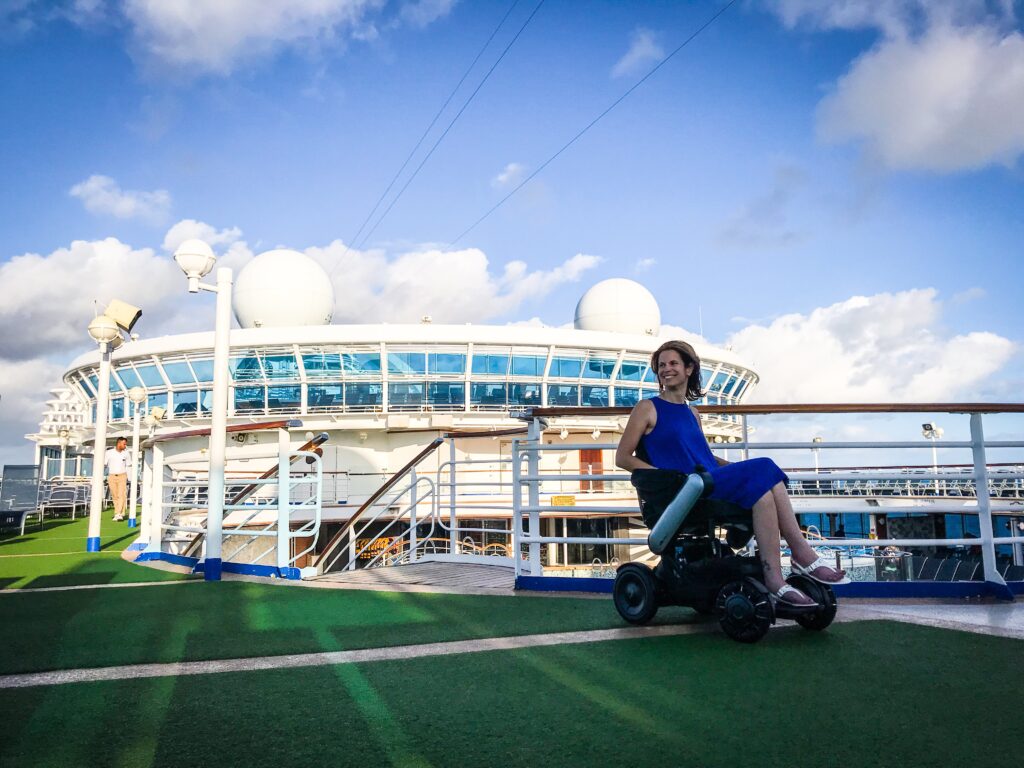
This image is property of i0.wp.com.
Legal Requirements and Regulations
The Americans with Disabilities Act (ADA)
The Americans with Disabilities Act (ADA) is a federal law in the United States that prohibits discrimination against individuals with disabilities and ensures equal access to public facilities and services. Cruise lines that operate in the United States or have itineraries including U.S. ports must comply with the ADA to provide equal access and accommodation for passengers with disabilities. The ADA outlines various accessibility requirements and standards that cruise lines must adhere to, including architectural barriers, communication, and auxiliary aids.
International Maritime Organization (IMO) Guidelines
The International Maritime Organization (IMO) is a specialized agency of the United Nations responsible for the safety and security of international shipping. The IMO has developed guidelines and standards to ensure the safety and accessibility of cruise ships, including those related to accessibility for passengers with disabilities. Cruise lines must comply with these guidelines, which cover various aspects such as accessible staterooms, gangways, emergency procedures, and accessible communication. The IMO guidelines ensure a consistent and minimum level of accessibility across the industry.
Cruise Line Accessibility Policy
Cruise lines have established their own accessibility policies to ensure compliance with applicable laws, regulations, and industry standards. These policies outline the specific accommodations and services offered to passengers with disabilities, along with the procedures for requesting these accommodations. Cruise lines aim to provide clear and transparent information about their accessibility policies, enabling passengers to make informed decisions and ensuring that their cruise experience is accessible, enjoyable, and inclusive.
Feedback and Improvement
Customer Feedback Mechanisms
Cruise lines value feedback from passengers, including those with disabilities, to continuously improve their accessibility offerings and services. They provide various channels for passengers to provide feedback, such as online surveys, comment cards, or direct communication with customer service representatives. By actively seeking and listening to customer feedback, cruise lines can identify areas for improvement and implement necessary changes to enhance accessibility and address any issues that arise.
Accessibility Audits and Surveys
Cruise lines conduct regular accessibility audits and surveys to assess the effectiveness of their accessibility initiatives and identify areas for improvement. These audits may be conducted by external organizations or internal accessibility experts who assess various aspects of the cruise experience, including ship design, amenities, services, and crew training. By conducting these audits and surveys, cruise lines can ensure that they meet the needs of passengers with disabilities and maintain a high standard of accessibility throughout their fleet.
Continuous Improvements and Upgrades
Cruise lines are committed to continuously improving their accessibility initiatives and making necessary upgrades to ensure a positive experience for passengers with disabilities. They invest in research and development to identify and implement innovative accessibility solutions, adopting new technologies and design elements that enhance accessibility throughout their ships. By regularly evaluating and upgrading their accessibility features, cruise lines strive to create a welcoming and inclusive environment for all passengers, irrespective of their abilities.
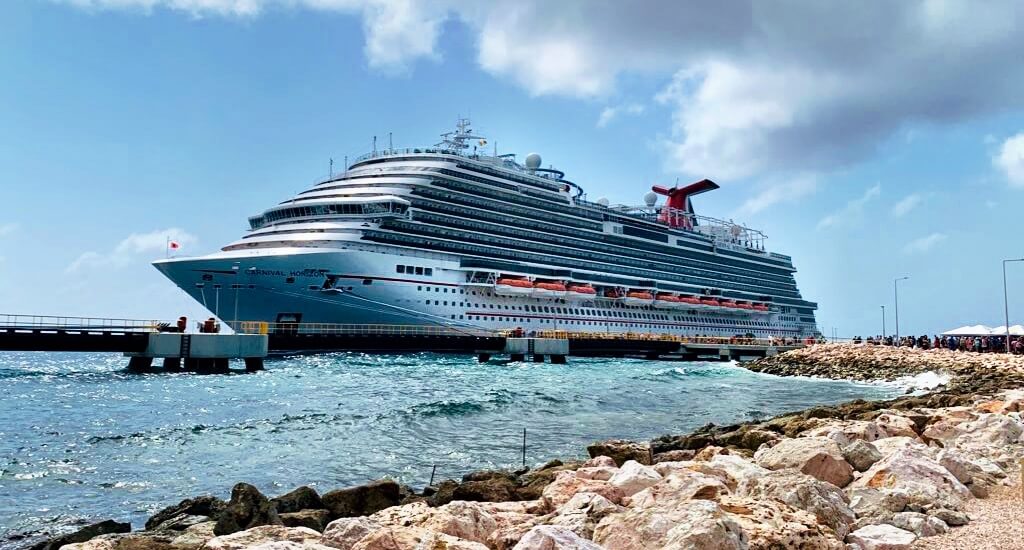
This image is property of curbfreewithcorylee.com.
Hi, I’m Mike, the author of Ocean Bliss Journeys. Thank you for visiting 🙂

